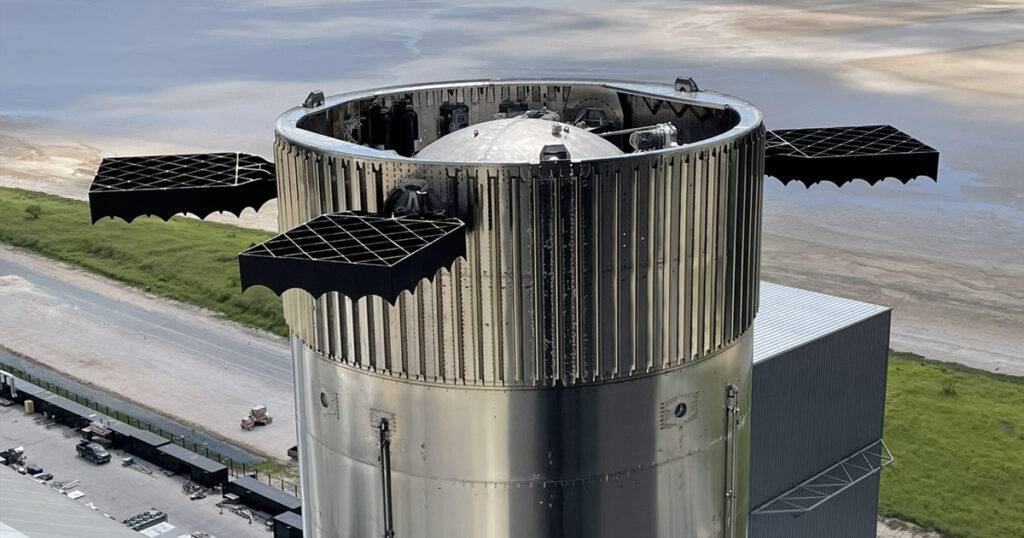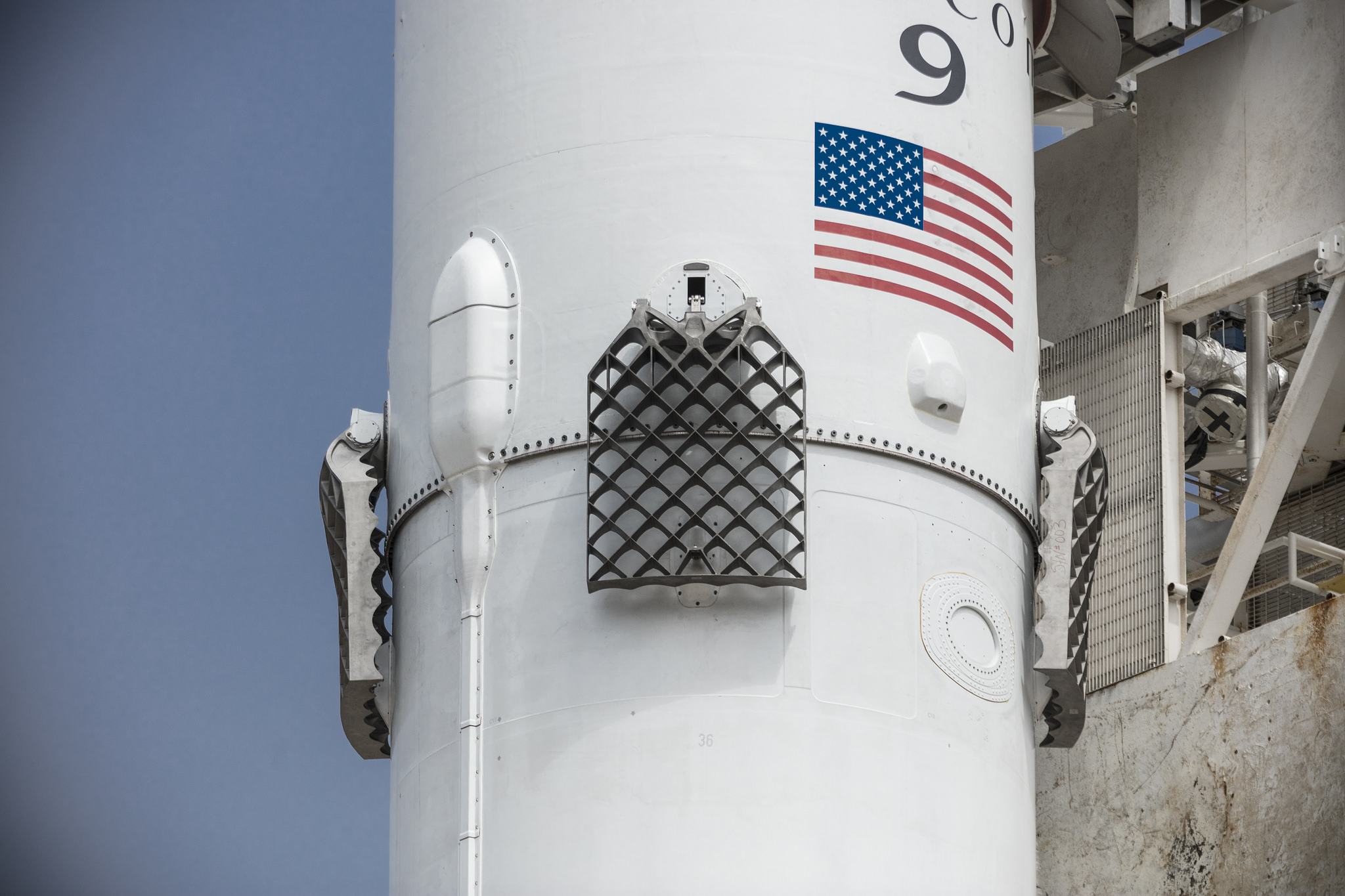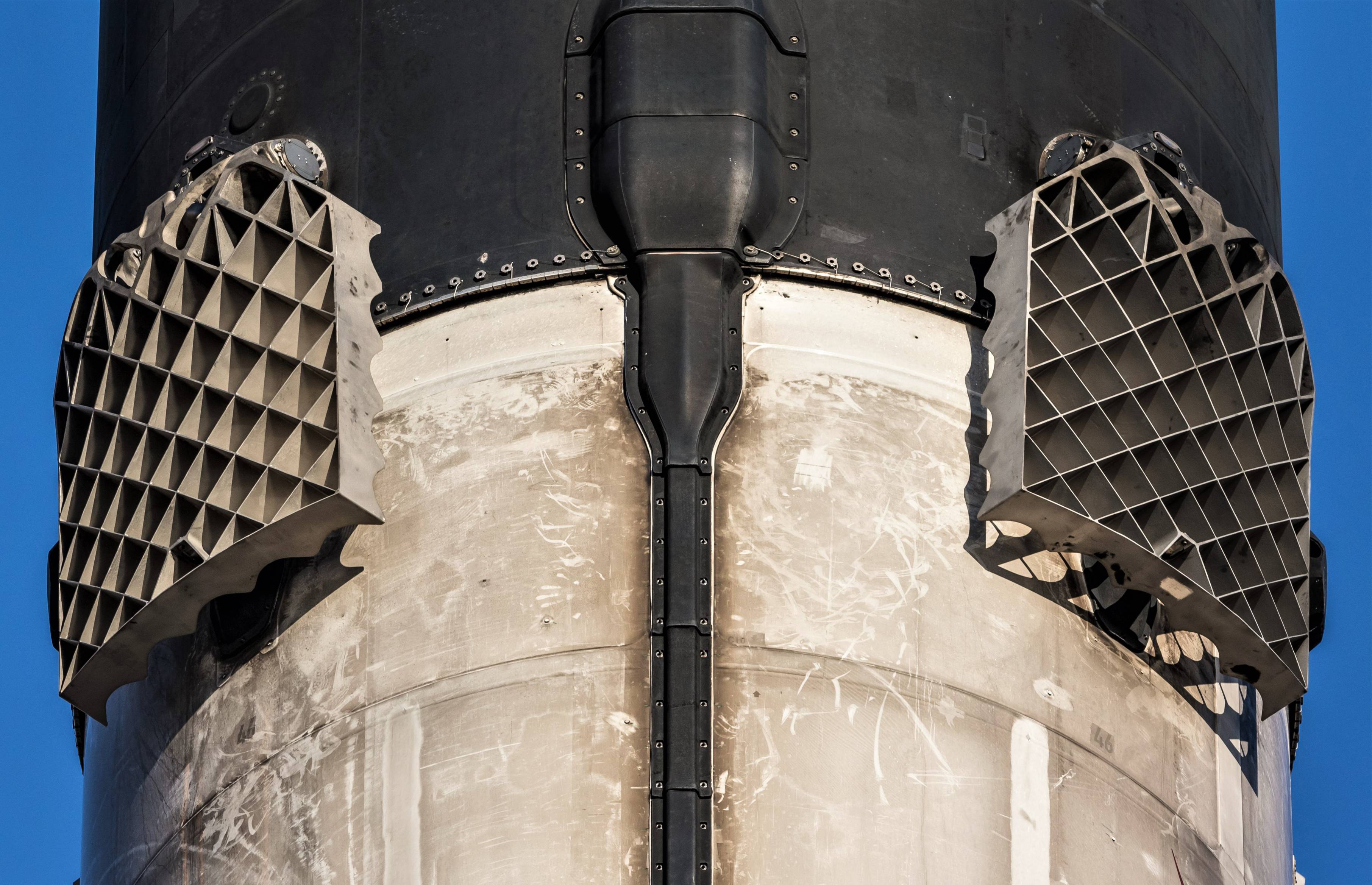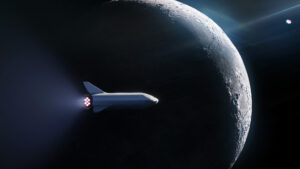
Why Does Super Heavy Have Grid Fins?
Super Heavy is the first stage of Starship meant to do the heavy lifting here on Earth and help get Starship up to orbit. This booster stands at 70m tall and is expected to use over 30 engines in the future. Not only this but the booster also has four massive grid fins at the very top.
Super Heavy has grid fins to help with aerodynamic pitch, controlling the descent back towards Earth, and being caught out of mid-air. SpaceX’s goal of Starship being fully reusable plays a big role in the addition of grid fins on Super Heavy. Without them, SpaceX would have a much harder time trying to safely land the booster.
Coming in at around 16ft tall and 8ft wide Super Heavy’s grid fins are massive. They also add a significant amount of weight to Starship. Similar to the Falcon 9 booster’s grid fins they play a key role in the landing of the booster. However, Super Heavy’s grid fins have some modifications for Starship’s unique goals.
What Are Grid Fins?

Grid fins are a type of flight control surface commonly used on bombs and rockets. A grid fin is a lattice of smaller aerodynamic surfaces within a box. Because of their unique design they often get compared to waffle irons or potato mashers. SpaceX originally started using them around 2014 on the Falcon 9 booster. Late in 2015, the grid fins were able to help control and successfully land a Falcon 9 booster for the first time. This was a very big deal and helped improve SpaceX’s confidence in the design. In the case of Super Heavy, there are four large grid fins at the very top. These grid fins are meant to help the Super Heavy orient and adjust its path when headed back down to Earth. They are not meant to fold and are also extremely heavy. Made of steel and around 16ft tall and 8ft wide it helps make it clear how big these really are.
Why Does Super Heavy Have Them?
Aerodynamic Pitch – One of the main reasons Super Heavy has grid fins is to control aerodynamic pitch. While falling back towards Earth the grid fins are capable of adjusting yaw and roll. To do this SpaceX has installed four grid fins that can be controlled and adjusted while in flight. These slight movements of the grid fins while falling can point the 70m tall booster in the right direction. This is necessary for Super Heavy because of SpaceX’s landing plan. Not only does SpaceX want to reuse the booster but they want to catch it. This action will require extreme precision and almost no room for error. SpaceX needs as much control as possible to ensure the booster is positioned correctly when it’s attempting to be caught. The grid fins will help provide some of this accuracy on the way down.
Controlling The Descent – Another benefit of grid fins on Super Heavy is helping control the descent. Not only will they be capable of helping orient Super Heavy on the way down but also slowing it down. On the way down Super Heavy will be going extremely fast. However with the upper stage disconnected and the majority of the propellant used, it will be a lot lighter than at liftoff. Despite the grid fin’s design, they will still produce some drag. This could help slow down the booster on the descent prior to a landing burn. Another unique part about the fins is that they will not be capable of folding. This means when launching they will be fully extended rather than tucked away. This will not present a problem for the ascent because of Super Heavy’s power and mass. The full Starship weight combined with over 30 Raptor engines will dwarf any drag caused by the fins. Additionally, this is a big reason why the fins are so big and made of steel. This is necessary to withstand all the forces of launch and landing. They not only need to work for one launch but many others in the future.
Super Heavy Grid Fins Vs Falcon 9 Grid Fins

While Super Heavy and Falcon 9 grid fins share a lot of similarities, they also have some big differences. One of the first differences is size. Falcon 9’s grid fins are around 5 feet by 4 feet while Super Heavy’s are around 16ft by 8ft. This massive difference has to do with the difference in rocket size and the weight and power needed. Another big difference is the folding mechanism. The Falcon 9 grid fins are capable of folding and stay tucked in for launch. Once the booster is disconnected and falling back towards Earth they are unfolded and used to help control the booster. SpaceX decided to make Super Heavy grid fins fixed in place. The main reason for this was SpaceX wanting to remove additional parts and complications. This ends up making the rocket cheaper and easier to produce.
Downsides Of Grid Fins
Grid fins provide a lot of benefits to Starship and Super Heavy but they are not perfect. One of the biggest downsides is weight. Super Heavy grid fins are massive and made of steel. With four of them on the rocket, this adds a lot of additional mass. Companies always try to make rockets as light as possible to increase payload capacity, decrease propellant, and more. However, SpaceX and Elon have mentioned plans for the future. Elon specifically has said that he is confident in the future they can make Super Heavy’s grid fins a lot smaller. Right now they are only testing the launch vehicle and have a lot of prototype parts. The reduction in size could still provide the benefits but also cut down on the weight.
Conclusion
One of the things that make Super Heavy so unique is the large grid fins at the top. However, these grid fins are not just for looks. They help provide aerodynamic pitch, control the descent, provide a catch point, and more. SpaceX has had great success with the Falcon 9 booster grid fins and is hoping for an even better result for Super Heavy. These grid fins are necessary if SpaceX wants to not only consistently reuse the booster but also safely and precisely catch it. With the first orbital test flight very soon we are likely to see them partially in action for the very first time.



